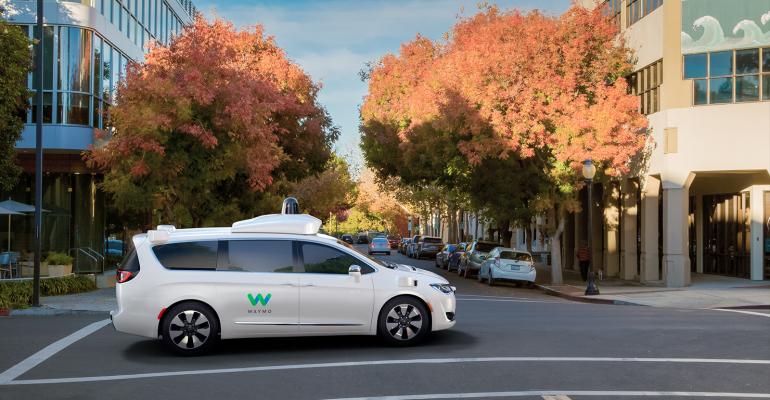Fiat Chrysler Automobiles joins BMW, Intel and Mobileye in a consortium to develop an autonomous vehicle for global markets, the companies announce today in a joint statement in London.
The automakers and technology companies signed a memorandum of understanding to “leverage each other’s individual strengths, capabilities and resources” to create a scalable driving platform able to support Level 3, 4 and 5 automated driving. The platform is intended for use by multiple automakers worldwide.
“In order to advance autonomous driving technology, it is vital to form partnerships among automakers, technology providers and suppliers,” says FCA CEO Sergio Marchionne. “Joining this cooperation will enable FCA to directly benefit from the synergies and economies of scale that are possible when companies come together with a common vision and objective.”
The project significantly increases FCA’s role beyond its cooperative relationship with Google’s
Waymo self-driving car project. FCA supplied 100 Pacifica Hybrid to Waymo, which outfitted the electrified minivans with LIDAR, cameras, radar systems and the tech company’s artificial intelligence computer to create a self-driving vehicle.
The autonomous minivans began testing in Michigan and Arizona earlier this year and were joined by another 500 Pacifica Hybrids in April.
Marchionne told reporters at the 2017 North American International Auto Show he expects some Level 4 self-driving vehicles to be commonplace by 2022. Level 3 autonomy anticipates human intervention in certain driving situations while Level 4 is considered highly automated, capable of responding in all driving situations with or without human interaction. Level 5 assumes the vehicle will handle all aspects of driving.
“We will continue to have multiple dialogues with people who want to play in this space,” the FCA chief said in January. “We’ll see how far it will take us. I’m still convinced we cannot develop something on the inside that is better or superior than what is available from others.”
BMW, Intel and Mobileye executives echoed Marchionne’s sentiments and welcomed their newest partner to the cooperative the companies formed in July 2016 to make self-driving vehicles a reality by 2021.
“The two factors that remain key to the success of the cooperation are uncompromising excellence in development and the scalability of our autonomous driving platform,” says Harald Krüger, chairman of the Board of Management-BMW. “With FCA as our new partner, we reinforce our path to successfully create the most relevant state-of-the-art, cross-OEM Level 3-5 solution on a global scale.”
Intel CEO Brian Krzanich adds: “The future of transportation relies on auto and tech industry leaders working together to develop a scalable architecture that automakers around the globe can adopt and customize.”
FCA contributions will help move the group’s efforts into the testing and execution phase, says Amnon Shashua, CEO and chief technology officer of Intel’s Mobileye.
“The combination of vision-intense perception and mapping, differentiated sensor fusion and driving policy solutions offers the highest levels of safety and versatility, in a cost-efficient package that will scale across all geographies and road settings,” Shashua says.
The group says it is on-track to deploy 40 autonomous test vehicles on the road by year-end. It also expects to benefit from leveraging data and learnings from the recently announced Mobileye fleet of 100 Level 4 test vehicles.
[email protected] @bobgritzinger





